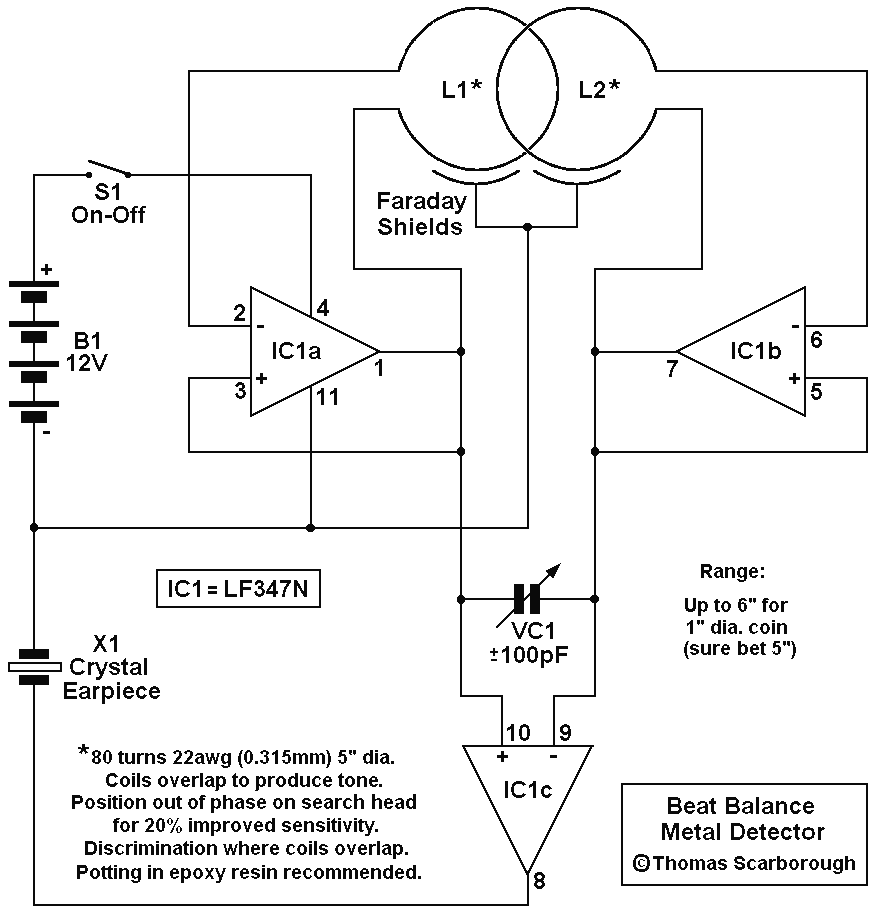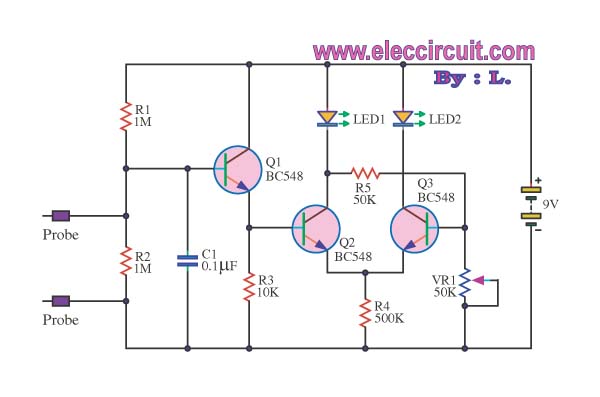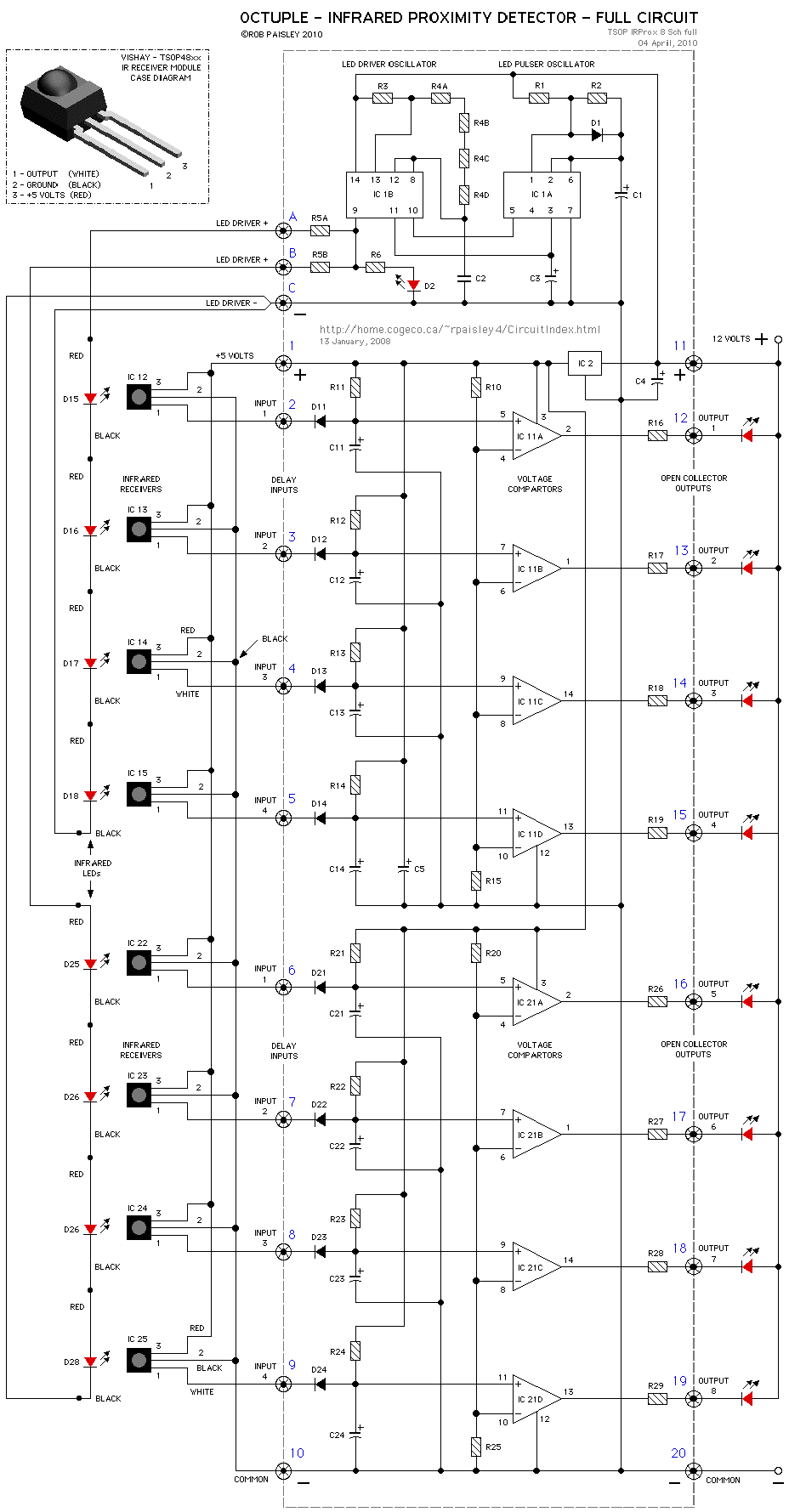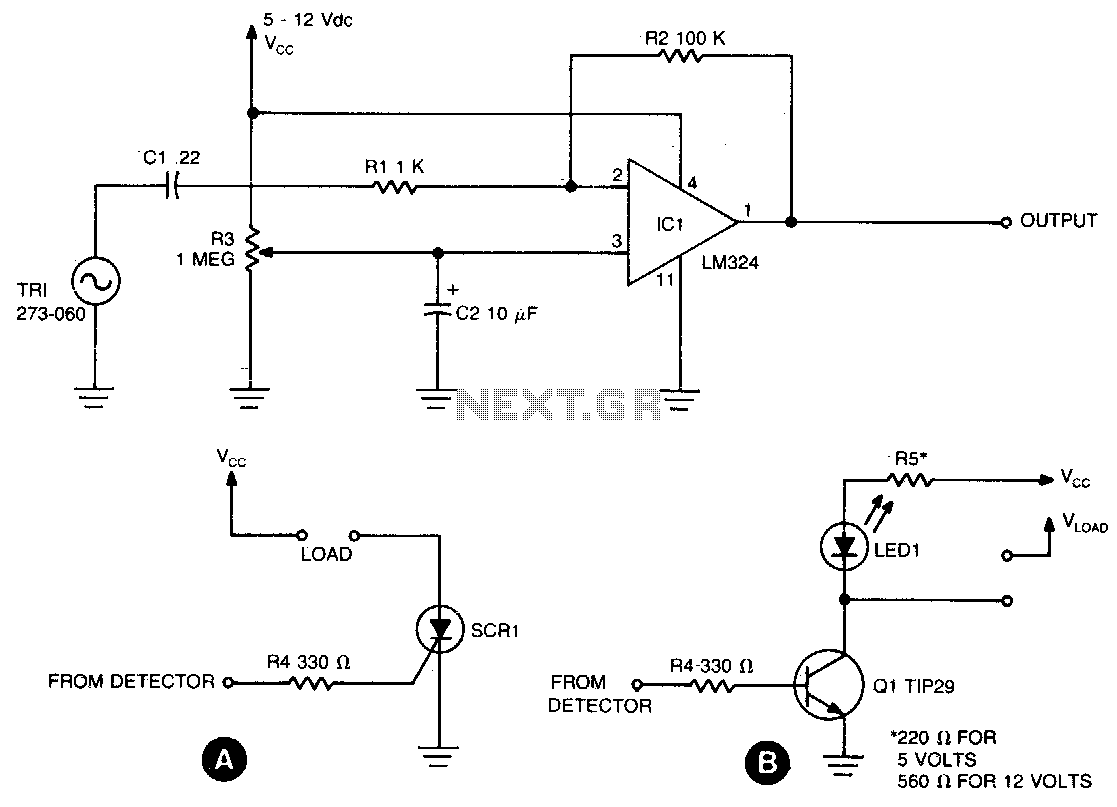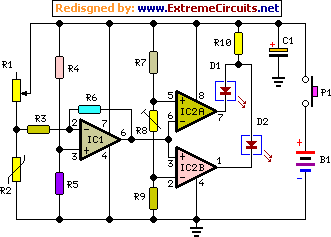
Gas and smoke detector
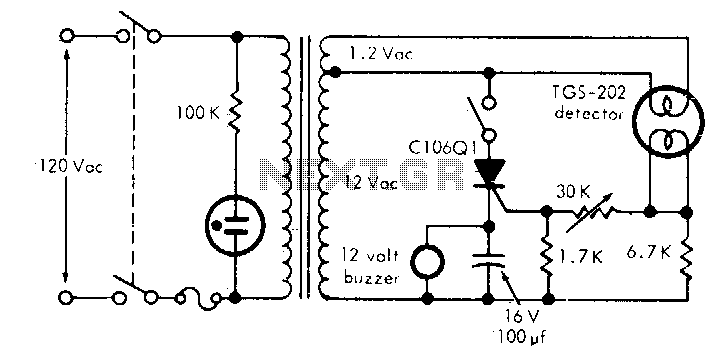
This circuit is capable of detecting smoke and various gases, including carbon monoxide (CO), carbon dioxide (CO2), methane, and coal gas, with a sensitivity of 10 parts per million (ppm). It employs a heated surface semiconductor sensor, which detects gas concentration increases by measuring a corresponding decrease in the internal resistance of the sensor element. Additionally, a switch in series with the silicon-controlled rectifier (SCR) is utilized for resetting the alarm.
The smoke and gas detection circuit operates by employing a semiconductor sensor that is heated to a specific temperature to enhance its sensitivity to gas molecules. The sensor's internal resistance varies with the concentration of gases present in the environment. As the concentration of harmful gases or smoke increases, the sensor's resistance decreases, triggering the detection mechanism.
The circuit typically includes a power supply, the heated semiconductor sensor, signal processing components, an alarm system, and a reset mechanism. The power supply provides the necessary voltage and current to operate the sensor and associated circuitry. The heated semiconductor sensor is central to the detection process, as it reacts to the presence of specific gases by changing its resistance.
The signal processing components may include operational amplifiers or comparators that amplify the change in resistance, allowing for better sensitivity and response time. When the sensor detects a gas concentration above the predetermined threshold (10 ppm), the output signal is activated, which can drive a visual or audible alarm to alert individuals of the hazardous condition.
The SCR serves as a switching device that can be activated by the output from the signal processing components. Once the alarm is triggered, the SCR remains in a conductive state until it is reset. The reset switch, connected in series with the SCR, allows users to deactivate the alarm system once the hazardous condition has been addressed, ensuring that the circuit can be reused for future detections.
Overall, this smoke and gas detection circuit is a vital safety device that helps monitor air quality and prevent hazardous situations by providing timely alerts to the presence of dangerous gases.This circuit can detect smoke and a number of gases (CO, CO2, methane, coal gas and others) with a 10 ppm sensitivity. It uses a heated surface semiconductor sensor. Detection occurs when the gas concentration increase causes a decrease of the sensor element internal resistance
The switch in series with the SCR is used for resetting the alarm. 🔗 External reference
The smoke and gas detection circuit operates by employing a semiconductor sensor that is heated to a specific temperature to enhance its sensitivity to gas molecules. The sensor's internal resistance varies with the concentration of gases present in the environment. As the concentration of harmful gases or smoke increases, the sensor's resistance decreases, triggering the detection mechanism.
The circuit typically includes a power supply, the heated semiconductor sensor, signal processing components, an alarm system, and a reset mechanism. The power supply provides the necessary voltage and current to operate the sensor and associated circuitry. The heated semiconductor sensor is central to the detection process, as it reacts to the presence of specific gases by changing its resistance.
The signal processing components may include operational amplifiers or comparators that amplify the change in resistance, allowing for better sensitivity and response time. When the sensor detects a gas concentration above the predetermined threshold (10 ppm), the output signal is activated, which can drive a visual or audible alarm to alert individuals of the hazardous condition.
The SCR serves as a switching device that can be activated by the output from the signal processing components. Once the alarm is triggered, the SCR remains in a conductive state until it is reset. The reset switch, connected in series with the SCR, allows users to deactivate the alarm system once the hazardous condition has been addressed, ensuring that the circuit can be reused for future detections.
Overall, this smoke and gas detection circuit is a vital safety device that helps monitor air quality and prevent hazardous situations by providing timely alerts to the presence of dangerous gases.This circuit can detect smoke and a number of gases (CO, CO2, methane, coal gas and others) with a 10 ppm sensitivity. It uses a heated surface semiconductor sensor. Detection occurs when the gas concentration increase causes a decrease of the sensor element internal resistance
The switch in series with the SCR is used for resetting the alarm. 🔗 External reference
